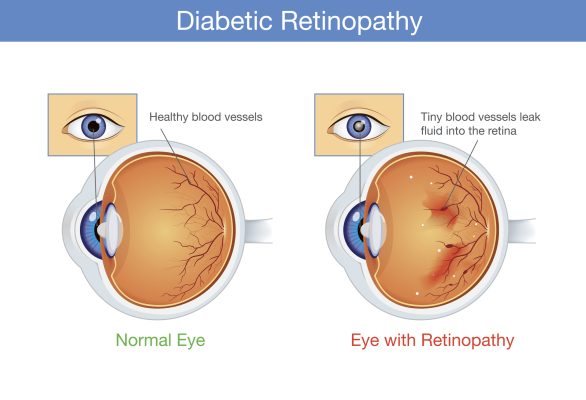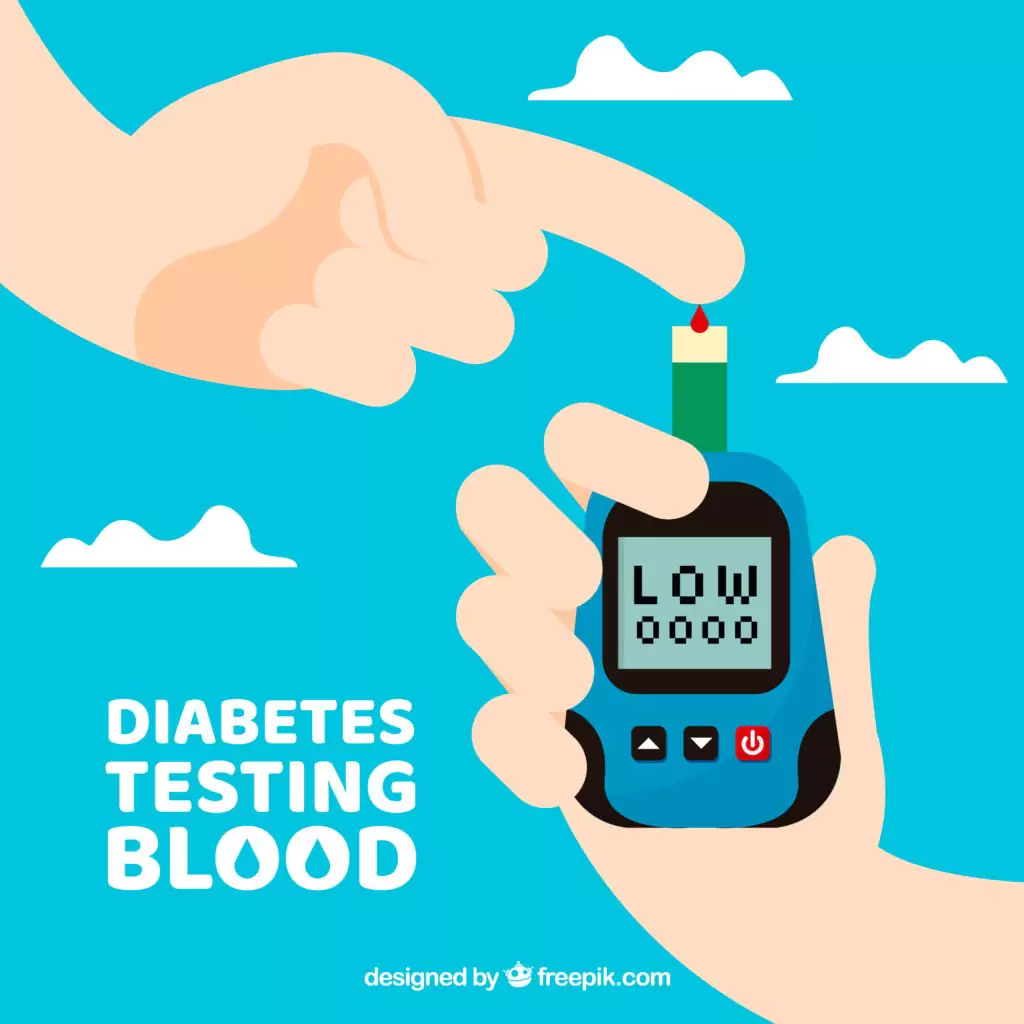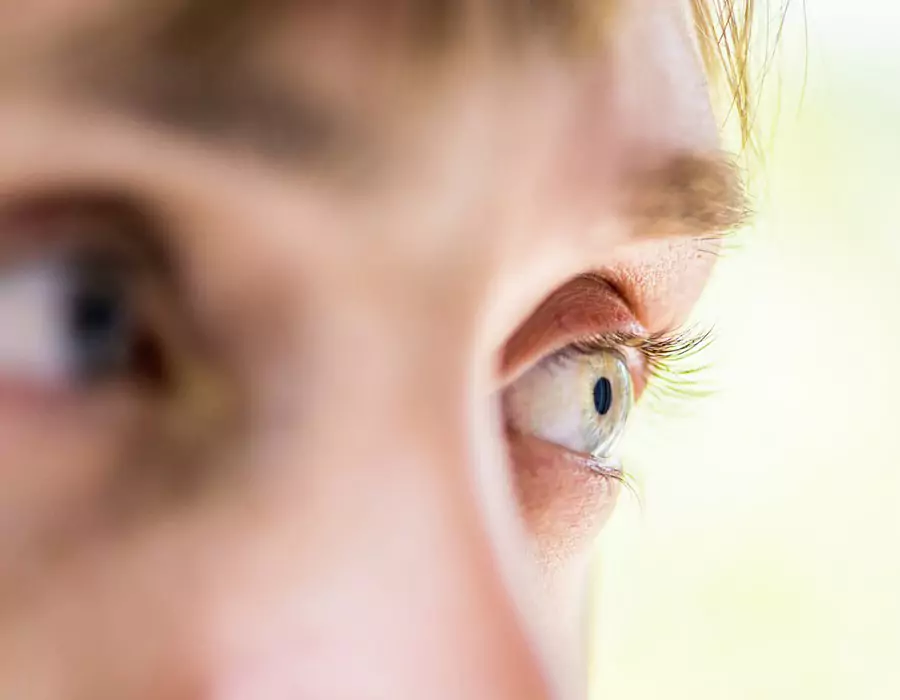
How To Improve Eye Signs When You Have Diabetes


Table of Contents
- How Diabetes Affects Vision
- The Risks Posed by Poorly Managed Diabetes
- Promoting Eye Health through Regular Exercise
- Enhancing Vision through Dietary Changes
- Reaping the Benefits of Fish Consumption
- The Pivotal Role of Hydration
- Embracing Leafy Greens
- Fiber-Rich Foods
- Stress Management and the Power of Mindful Meditation
- SugarMD Super Berberine
- Guarding Your Vision: Essential Measures for Your Eye Health
- The Role of Sunglasses in Eye Protection
- The Imperative of a Smoke-Free Lifestyle
- The Potential of Regular Eye Check-ups
- Wrapping up
- It's All Connected
- The Power of Prevention
- Frequently Asked Questions Expanded
- How does diabetes affect the eyes?
- How can regular exercise help improve eye health in diabetes?
- Why is hydration important in managing diabetes and eye health?
- Why are omega-3s beneficial for eye health?
- How can I protect my eyes from the sun?
- About The Author
Diabetes is more than a chronic metabolic disorder that affects glucose management in your body. It is a systemic illness with far-reaching consequences and its impact on various aspects of health cannot be overemphasized. One of the crucial and sometimes overlooked areas it profoundly affects is vision. In that case, the question arises, “how to improve eye signs when you have diabetes?” Vision is an integral part of our lives, providing the fundamental means through which we perceive and interact with the world around us.
However, when the delicate balance that governs our vision gets disrupted by diabetes the results can be devastating, leading to a myriad of eye conditions that can significantly impair vision and, in severe cases, cause irreversible vision loss.
How Diabetes Affects Vision
Diabetes primarily impairs vision through high blood sugar levels, leading to changes in the eye's blood vessels. Over time these changes give rise to a group of eye conditions collectively known as diabetic eye disease. Among these, diabetic retinopathy, diabetic macular edema, cataracts and glaucoma are the most prevalent.
Diabetic retinopathy the most common eye disease among people with diabetes, involves damage to the blood vessels in the retina—the light-sensitive tissue at the back of the eye. The blood vessels can swell, leak fluid or even close off entirely. Sometimes, abnormal new blood vessels grow on the retina, a condition referred to as proliferative diabetic retinopathy which can lead to severe vision loss or even blindness.

Anatomy of normal eye and Diabetic retinopathy in people who have diabetes
Diabetic macular edema is a complication of diabetic retinopathy. It occurs when fluid leaks into the macula—the part of the eye responsible for sharp, straight-ahead vision. This fluid buildup causes the macula to swell and thicken, distorting vision. Diabetic macular edema is the most common cause of vision loss among people with diabetic eye disease.
Cataracts form when the eye's clear lens clouds up. While cataracts can occur due to aging, people with diabetes tend to develop them at an earlier age. Moreover the progression of cataracts can be more rapid in those with diabetes.
Glaucoma, another sight-threatening condition, is twice as likely to occur in people with diabetes. It involves damage to the optic nerve due to increased pressure in the eye and can lead to a gradual, permanent loss of vision.
The Risks Posed by Poorly Managed Diabetes
The risk of developing these vision-impairing conditions is significantly heightened when diabetes is not adequately managed. Persistently high blood sugar levels the hallmark of poorly controlled diabetes, inflict a heavy toll on the body's blood vessels, including those in the eye. Elevated blood sugar can damage the blood vessels' delicate endothelial lining, triggering a cascade of harmful events.
This damage leads to the degradation of proteins in the blood vessels' walls, causing them to weaken, leak or become blocked. Furthermore, it can also prompt the growth of irregular, fragile blood vessels in the retina which can leak blood into the eye, clouding vision and causing further damage. Notably these changes don't occur overnight.
They result from sustained high blood sugar levels over time, underscoring the importance of rigorous and sustained diabetes management. It's important to remember that while diabetes can lead to severe vision impairment these outcomes are not inevitable. By understanding the risks and potential impacts of diabetes on vision, individuals can take proactive steps towards better diabetes management, regular eye exams and early detection of eye disease—all of which can help protect and preserve vision.
Promoting Eye Health through Regular Exercise
One's journey towards optimal eye health involves many paths and regular exercise is indeed a road less recognized. As we delve deeper into the realms of health and fitness, we realize the significant and powerful role of regular physical activity in the maintenance of not just overall health but eye health as well.
Physical activity aids in the promotion of better blood circulation which extends to the smaller blood vessels such as those found in the eyes. Aided circulation ensures an efficient supply of vital nutrients and oxygen to the eyes, enhancing their function and overall health. In the context of diabetes, consistent exercise can be instrumental in lowering the levels of sugar and pressure in the eyes. Additionally, it helps in raising the levels of high-density lipoprotein (HDL) or the 'good cholesterol' thereby contributing to better eye health.
Experts recommend engaging in moderate physical activities for a minimum of 30 minutes on most days of the week to attain these health benefits. These activities can be as simple as a brisk walk in your neighborhood park or even household chores such as sweeping or mopping. These activities not only keep you active but also serve as simple yet effective workouts that contribute to eye health.
Enhancing Vision through Dietary Changes
Reaping the Benefits of Fish Consumption
The adage, "You are what you eat," holds a fundamental truth. Your dietary choices can play a significant role in managing your health conditions, including diabetes and subsequently your eye health. A key nutrient in this regard is Omega-3 fatty acids, predominantly found in fatty fish such as salmon, halibut, albacore tuna, mackerel and sardines.
Omega-3 fatty acids are credited with myriad health benefits, from promoting heart health to combating inflammation. These nutrients have been linked to a reduced risk of diabetic retinopathy, a common complication of diabetes that affects the eyes.
Omega-3 fatty acids combat inflammation and impede the growth of abnormal blood vessels in the eyes, a primary symptom of this condition. Including fatty fish in your diet two meals a week can be an effective strategy to harness these benefits and enhance eye health.
The Pivotal Role of Hydration
Staying well-hydrated is a crucial part of managing diabetes and preserving eye health. Water plays a critical role in numerous bodily functions, including the regulation of blood sugar levels. Adequate hydration can prevent blood sugar levels from spiking, a common issue in individuals with diabetes. Hydration also supports the production of tears, thus avoiding dry eyes, a condition that can cause discomfort and blurred vision.
In a world where sugary beverages and juices are readily available, choosing water as your primary drink is a wise decision. Not only is it a calorie-free, sugar-free option but it also helps in maintaining a healthy weight, a vital aspect of managing diabetes. Make water your beverage of choice to reap its numerous benefits for both overall and eye health.
Embracing Leafy Greens
One of the most significant steps you can take to ensure healthier vision when dealing with diabetes is to incorporate more leafy greens into your diet. Leafy green vegetables are a treasure trove of beneficial nutrients, making them a superfood for your eyes. The star performers in this category include kale, spinach and romaine lettuce, each one bringing a plethora of vitamins and minerals to your plate.
Kale, for instance, is one of the most nutrient-dense foods on the planet. It is loaded with powerful antioxidants like Quercetin and Kaempferol which combat oxidative damage and promote overall eye health. Spinach, on the other hand, is high in niacin and zinc as well as protein, fiber, vitamins A, C, E and K, thiamin, vitamin B6, folate, calcium, iron, magnesium, phosphorus, potassium, copper and manganese.
These nutrients synergistically work together to protect your eyes from damage. Romaine lettuce, while lighter in texture, is heavy in beneficial nutrients. It's an excellent source of vitamins A and K which are essential for maintaining good vision and protecting the eyes from harmful light. The superstars in these green leafy vegetables, however, are the carotenoids, lutein and zeaxanthin.
These potent antioxidants are known for their ability to absorb harmful blue light and prevent oxidative stress that can damage our retina. They also help prevent cataracts and age-related macular degeneration, common problems that can significantly impact vision, especially in people with diabetes.
Fiber-Rich Foods
Another critical aspect of managing eye health with diabetes is maintaining proper blood glucose levels and this is where fiber-rich foods come into play. The role of dietary fiber in blood sugar regulation is often undervalued but incorporating a rich array of fiber-filled foods into your diet can have significant benefits for your vision. Whole grains, fruits, vegetables and legumes are excellent sources of dietary fiber.
The fiber in these foods slows the absorption of sugars into your bloodstream which can prevent sudden spikes in blood glucose and insulin levels. This control is essential for those with diabetes as unregulated blood sugar levels can damage the delicate vessels in the eyes over time, leading to severe vision problems.
Stress Management and the Power of Mindful Meditation
While diet is an essential component of eye health, we mustn't overlook the role of mental wellbeing. Stress is a known catalyst for various health issues, including fluctuating blood sugar levels. For individuals with diabetes, this can be particularly problematic as elevated blood sugar levels can lead to an increased risk of eye complications.
Meditation, a practice often associated with stress reduction, is an effective tool to help manage these concerns. Practicing mindful meditation allows you to focus on the present moment, reducing the effects of stress on your body, including elevated blood sugar. Through controlled breathing and conscious awareness, meditation helps to lower blood pressure and create a sense of calm, positively impacting overall health and, consequently, eye health.
Moreover, research shows that mindfulness-based stress reduction can be beneficial in managing diabetes, making it an excellent supplement to conventional treatment methods. Regular practice can lead to decreased stress and anxiety levels, improved attention and focus and better blood glucose control, all contributing to the overall goal of protecting your vision in the face of diabetes.
SugarMD Super Berberine
SugarMD Berberine - to control blood sugar and prevent diabetic complications including diabetic retinopathy SugarMD Super Berberine is a superior supplement for those seeking to maintain healthy glucose metabolism and reduce inflammation. Unlike other supplements, it utilizes a potent blend of dihydroberberine and 100% pure Ceylon cinnamon to ensure that blood sugar remains in a healthy range. Additionally, this formula is safe and effective for long-term use. Regular use of this product will lead to a significant reduction in inflammation which is a well-known contributor to a wide range of health issues. If you're looking for a supplement that can help you maintain healthy glucose levels while reducing inflammation, SugarMD Super Berberine is the perfect choice.
Guarding Your Vision: Essential Measures for Your Eye Health
In our journey to safeguard eye health, especially for those grappling with diabetes, three core elements take center stage: protecting the eyes from harmful external influences, adopting a smoke-free lifestyle and routine eye examinations. These facets, when attended to diligently can mitigate the risks associated with eye diseases, encouraging both better vision and overall wellness.
The Role of Sunglasses in Eye Protection
Sunglasses are far more than a trendy accessory. They offer critical protection from the sun's harmful ultraviolet (UV) rays. UV exposure can instigate or worsen several eye conditions such as cataracts and macular degeneration. For those living with diabetes, this risk is heightened and protective eyewear becomes a non-negotiable part of their routine.
Choosing sunglasses should go beyond aesthetic considerations; the focus should be on their UV-blocking capabilities. Look for options that block 99% to 100% of both UVA and UVB rays. Wraparound styles can be particularly effective as they shield your eyes from every angle.
Remember that the sun's rays are potent throughout the year, not just in summer and their reflection off surfaces like water or snow can intensify exposure. Make wearing high-quality sunglasses a habit, whether you're lounging at the beach or simply out for a winter stroll.
The Imperative of a Smoke-Free Lifestyle
Among the many adverse effects of smoking the impact on eye health is often overlooked. Cigarette smoke is a noxious cocktail of toxins, many of which can harm the delicate structures of the eye. It contributes to a twofold increase in the risk for cataracts - a clouding of the eye's lens leading to blurry vision. For those contending with diabetes, the threat looms even larger.
Smokers with diabetes are more likely to develop diabetic retinopathy - a disease where high blood sugar levels cause damage to the blood vessels in the retina and they also have a higher propensity for it to progress rapidly. Opting for a smoke-free lifestyle can dramatically reduce these risks.
If you're a smoker, it's never too late to quit. Resources abound, from nicotine replacement therapies to support groups and counseling services. Remember, every day without smoking is a step towards better eye health and a healthier life overall.
The Potential of Regular Eye Check-ups
Routine eye examinations are an integral part of maintaining ocular health. They offer an opportunity for early detection of potential eye diseases, enabling timely intervention and treatment. In the context of diabetes, regular eye check-ups take on a greater significance. Eye doctors use a comprehensive dilated eye exam to check for conditions such as diabetic retinopathy, diabetic macular edema, glaucoma and cataracts.
By dilating the pupils they get a clear view of the back of the eyes and can assess any changes or damages. These check-ups should occur at least once a year or more frequently if recommended by your doctor. Remember some diabetic eye diseases might not exhibit symptoms in their early stages, making regular check-ups vital. They could mean the difference between retaining good vision or suffering irreversible damage.
Wrapping up
Caring for your vision, particularly when managing diabetes, may seem daunting. However the path to preserving your sight need not be strenuous. By introducing some vital changes - adopting UV-protective eyewear, saying no to smoking and embracing regular eye examinations - you can create a robust shield for your eyes.
It's important to remember that these strategies work best in conjunction with other lifestyle choices: regular exercise, a nutritious diet, adequate hydration and stress management. Together they contribute to your overall well-being, with your eye healthbeing a crucial component of this holistic approach.
These proactive measures do not guarantee absolute immunity from eye conditions but they significantly reduce the risk and progression of diseases, especially for individuals with diabetes. Vision is one of our most valuable senses and its preservation requires concerted effort and dedication.
Understanding and implementing these protective measures empowers us to take control of our eye health, minimizing the risk of sight-threatening conditions. While it may feel like a significant undertaking, remember that every small step you take, like putting on your sunglasses before stepping out can have a substantial cumulative impact.
It's All Connected
Just as an ecosystem thrives through the interplay of various elements so does our health. The body functions as an interconnected system; lifestyle choices like diet, exercise and stress management that generally contribute to overall health, also benefit our eyes. Eye health and systemic health are intertwined. Diabetes management is a prime example of this interconnectedness.
Good glycemic control, achieved through a combination of a balanced diet, regular exercise, medication and stress management, not only keeps diabetes in check but also aids in the prevention of related eye conditions.
The Power of Prevention
In the battle against eye diseases, prevention is your most potent weapon. It's about equipping yourself with the right information, making informed decisions and taking timely action. And, when it comes to preserving your vision, remember that the journey is just as crucial as the destination. Embarking on this journey might require some changes to your daily routines and lifestyle but the benefits far outweigh the efforts.
You'll not only be working towards healthier eyes but also cultivating a healthier, more balanced life. Taking care of your vision when dealing with diabetes doesn't have to be an overwhelming task. With the right measures and a consistent approach, you can safeguard your sight and ensure a clearer, brighter future. After all the world appears beautiful through healthy eyes.
Frequently Asked Questions Expanded
How does diabetes affect the eyes?
Diabetes, a condition characterized by high blood sugar levels can profoundly impact eye health, leading to a range of complications. These complications stem from the detrimental effects of sustained high blood sugar on the small vessels in the eyes.
How can regular exercise help improve eye health in diabetes?
Exercise plays a vital role in maintaining overall health and well-being and eye health is no exception. Regular physical activity aids in blood circulation, enhancing the amount of oxygen and nutrients delivered to the eyes.
By controlling weight and reducing blood sugar levels, regular exercise can help manage diabetes and thus reduce the risk of diabetic retinopathy. Exercise also helps lower intraocular pressure, reducing the risk of glaucoma.
Why is hydration important in managing diabetes and eye health?
Hydration plays a critical role in managing diabetes and, consequently, eye health. Adequate water intake helps control blood sugar levels, preventing them from spiking. High blood sugar can cause the lens in your eyes to swell, altering your ability to see.
Furthermore, staying well-hydrated aids in maintaining a healthy tear film on the eye surface, essential for clear vision and comfort. This film protects the eye from infections and inflammations, providing necessary lubrication.
Why are omega-3s beneficial for eye health?
Omega-3 fatty acids, especially those found in fatty fish like salmon and tuna, offer numerous health benefits, including eye health. These fats are essential components of the retina's cells and their deficiency can lead to vision issues. Research suggests that omega-3s can help prevent abnormal blood vessel growth and decrease inflammation in the eyes—both common features in severe forms of diabetic retinopathy. They can also help with dry eye syndrome by improving the eye's oil film, produced by small glands on the edge of the eyelids.
How can I protect my eyes from the sun?
Wearing sunglasses that block 100% of UVA and UVB rays is one of the most effective ways to protect your eyes. These glasses shield youreyes from harmful sun exposure, reducing the risk of any sun-induced eye damage. Wearing a wide-brimmed hat or cap on sunny days can provide additional protection. Regular use of UV-protective eyewear is crucial, even on cloudy days as UV rays can penetrate cloud cover.
About The Author
Meet Dr. Ahmet Ergin a highly skilled and dedicated endocrinologist with a passion for diabetes care. Dr. Ergin earned his medical degree with honors from Marmara University in Istanbul. He completed internal medicine residency and endocrinology fellowship at Cleveland Clinic.
Dr. Ergin is board-certified in Internal Medicine, Endocrinology, Diabetes and Metabolism due to his vast medical expertise. He's a certified diabetes educator, author of "The Ultimate Diabetes Book," and founder of "the SugarMD YouTube channel."
Dr. Ergin offers exceptional diabetes care to his patients in Port Saint Lucie, FL, helping them manage effectively. Disclaimer: These statements have not been evaluated by the Food and Drug Administration. Information on this website isn’t intended to treat, cure or prevent any disease. Discuss with your doctor and do not self-treat.
Written By Dr. Ahmet Ergin
461 total articles
Meet Dr. Ahmet Ergin, a highly skilled and dedicated endocrinologist with a passion for diabetes care. Dr. Ergin earned his medical degree with honors from Marmara University in Istanbul. He completed internal medicine residency and endocrinology fellowship at Cleveland Clinic. Dr. Ergin is board-certified in Internal Medicine, Endocrinology, Diabetes, and Metabolism due to his vast medical expertise. He's a certified diabetes educator, author of “The Ultimate Diabetes Book,” and founder of “the SugarMD YouTube channel.” Dr. Ergin offers exceptional diabetes care to his patients in Port Saint Lucie, FL, helping them manage effectively. For a closer look into his insights and experiences, connect with Dr. Ahmet Ergin on LinkedIn, Instagram, and YouTube.”
Disclaimer: These statements have not been evaluated by the Food and Drug Administration. Information on this website isn't intended to treat, cure or prevent any disease. Discuss with your doctor and do not self-treat.
Products
















